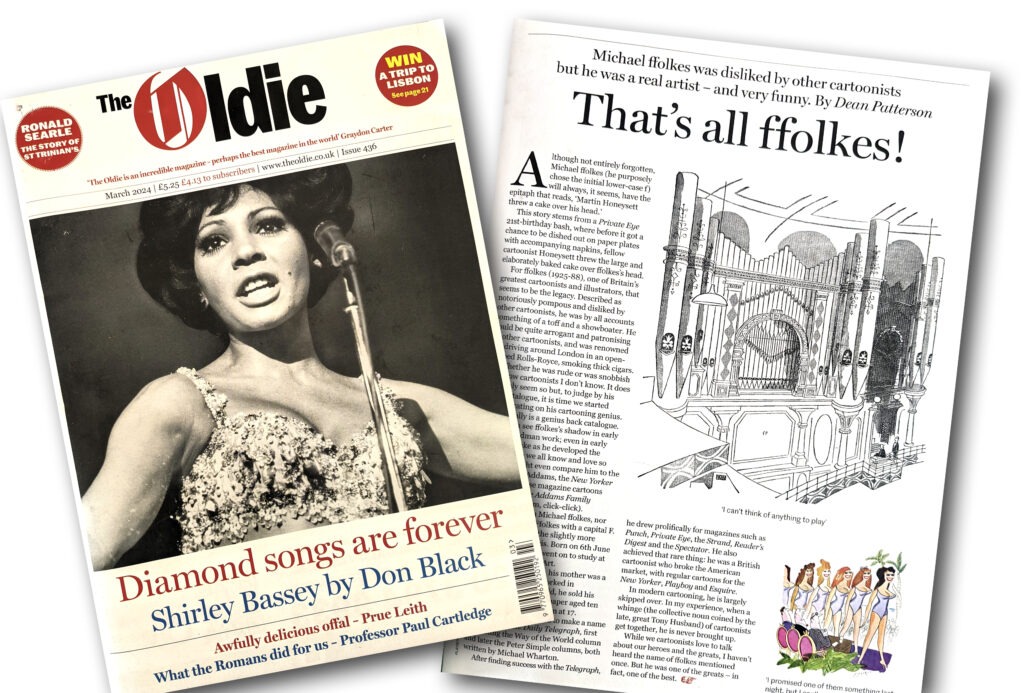
Dean Patterson writes:
Why I’m championing the genius of Michael ffolkes.
Although probably not entirely forgotten, Michael ffolkes (purposely lowercase) will always it seems have the epitaph that reads, ‘Martin Honeysett threw a cake over his head.’ This story stems from a Private Eye 21st birthday bash, where before it got a chance to be dished out on paper plates with accompanying napkins, fellow cartoonist Honeysett threw the large and elaborately baked cake over ffolkes’ head.
Honeysett’s own obituary in the Guardian reads, ‘…Michael ffolkes. His name will live for ever just for that.’ It is a quote I believe originally attributed to the cartoonist Ken Pyne. And as much as I think of Honeysett and Pyne, I don’t think that is entirely fair.
One of Britain’s greatest cartoonists and illustrators, that seems to be the legacy of ffokes. Described as notoriously pompous and disliked by other cartoonists, he was by all accounts something of a toff and a showboater. He could be quite arrogant and patronising to other cartoonists, renowned for driving around London in an open topped Rolls Royce smoking thick cigars.
Whether he was rude or he was snobbish to fellow cartoonists I don’t know, I wasn’t there. It does certainly seem so, but looking at his back catalogue it is probably about time we start concentrating on his cartooning genius and put the cake on his face to one side. And it really is a genius back catalogue.
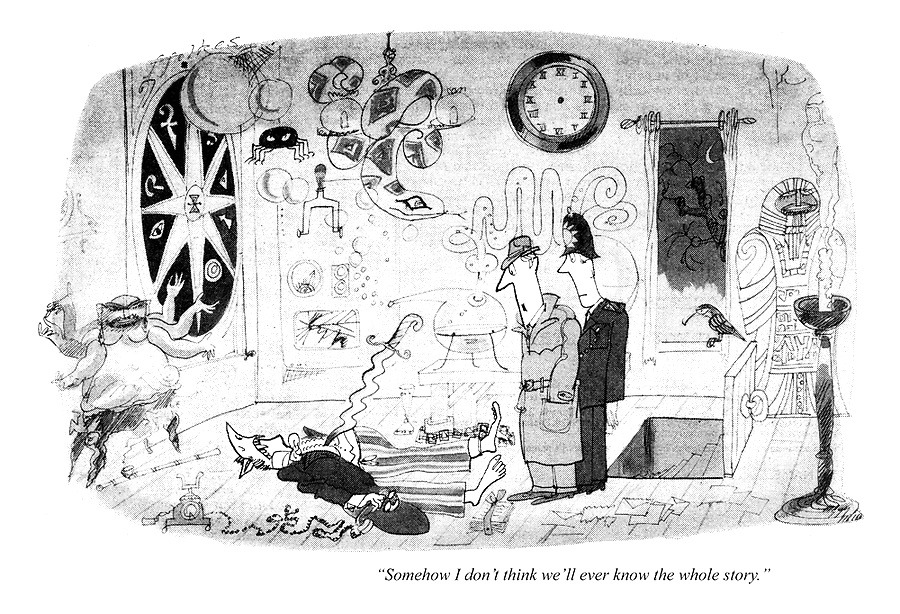
cartoon © Punch
If one can see cartooning as an artform, as I do and think everyone should, ffolkes is a great example of why. You can see his shadow in early Ralph Steadman work, even in early Quentin Blake as he developed the sketchy style we all know and love so well. You might even compare him to the great Charles Addams, the legendary New Yorker cartoonist whose magazine cartoons evolved into the Addams Family (dud-du-dud-dum, click-click.)
He wasn’t born Michael ffolkes, nor was he even born Ffolkes with a capital F. He was christened the slightly more mundane Brian Davis. Born on the 6th June, 1925 in London he went on to study at St. Martin’s school of art. Little more is known of his personal life or background. By his own account his mother was a singer and his father worked in advertising. He was an only child, he sold his first cartoon to his local paper aged 10 and his first Punch cartoon at 17.
Around 1955 he started to make a name for himself in Britian in the Daily Telegraph, first illustrating the Way of the World column and later the Peter Simple columns, both written by Michael Wharton.
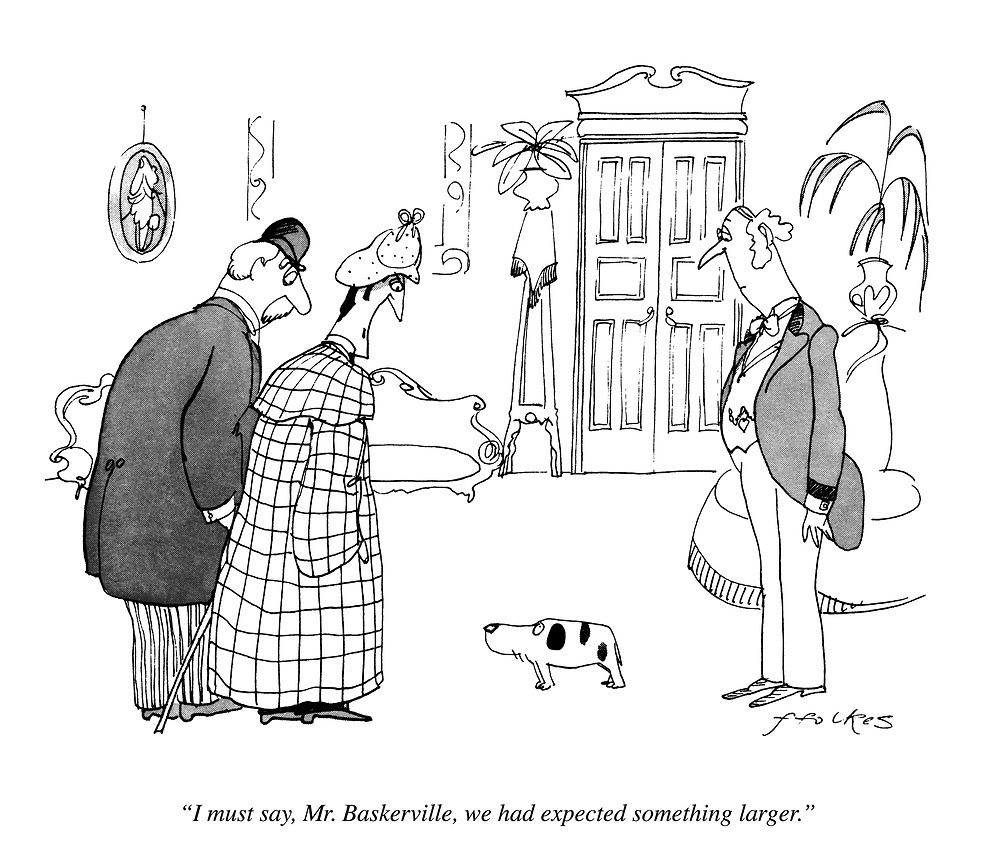
cartoon © Punch
After finding success with the Telegraph he drew prolifically for magazines such as Punch, Private Eye, The Strand, Reader’s Digest and The Spectator. He also achieved that rare thing, he was a British cartoonist who broke the American market with regular cartoons for The New Yorker, Playboy and Esquire.
In modern cartooning he is largely skipped over. In my experience when a whinge of cartoonists (a collective noun as coined by the late, great Tony Husband) get together he is never brought up. We cartoonists love to talk about our heroes and the greats, I haven’t heard the name of ffolkes mentioned once. But he was one of the greats, in fact one of the best.
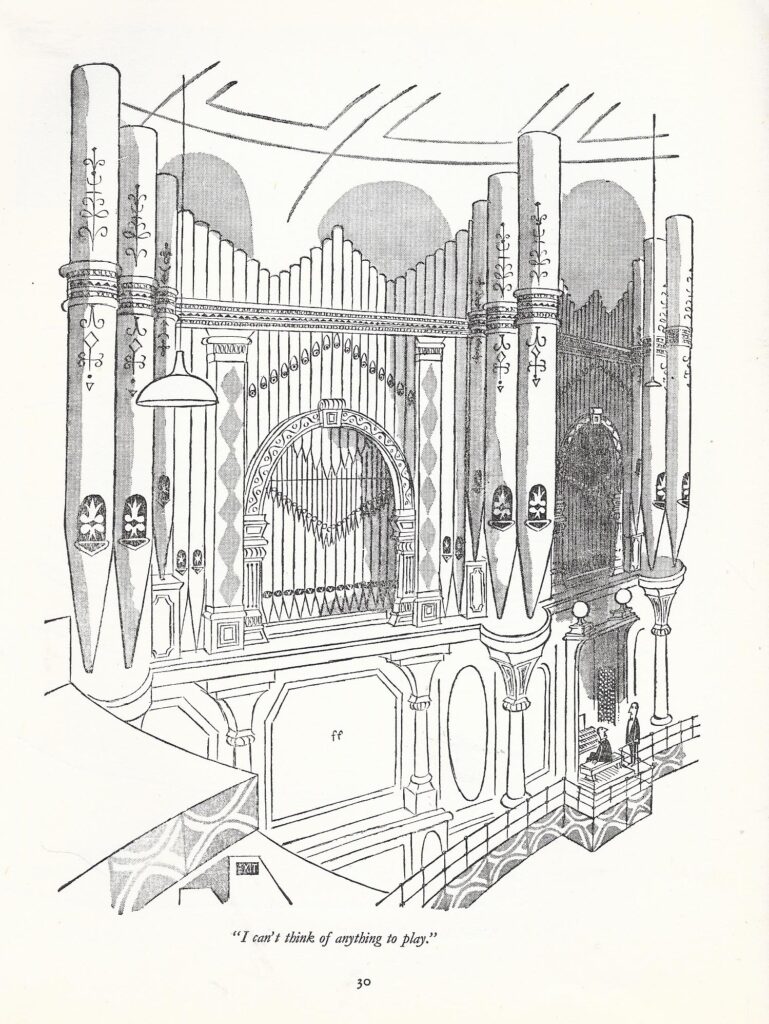
cartoon © Punch
His use of ink and watercolour was outstanding. He could do a simple black and white drawing and he could use watercolour better than nearly any other. He would sometimes do a background completely in watercolour without black line at all. He could put the most fascinating detail in his drawings, on par with the brilliant French legend Jean-Jacques Sempé, that are breath-taking and just like Sempé his simple drawings are equally as breath-taking in their few lines. In short, he was an artist.
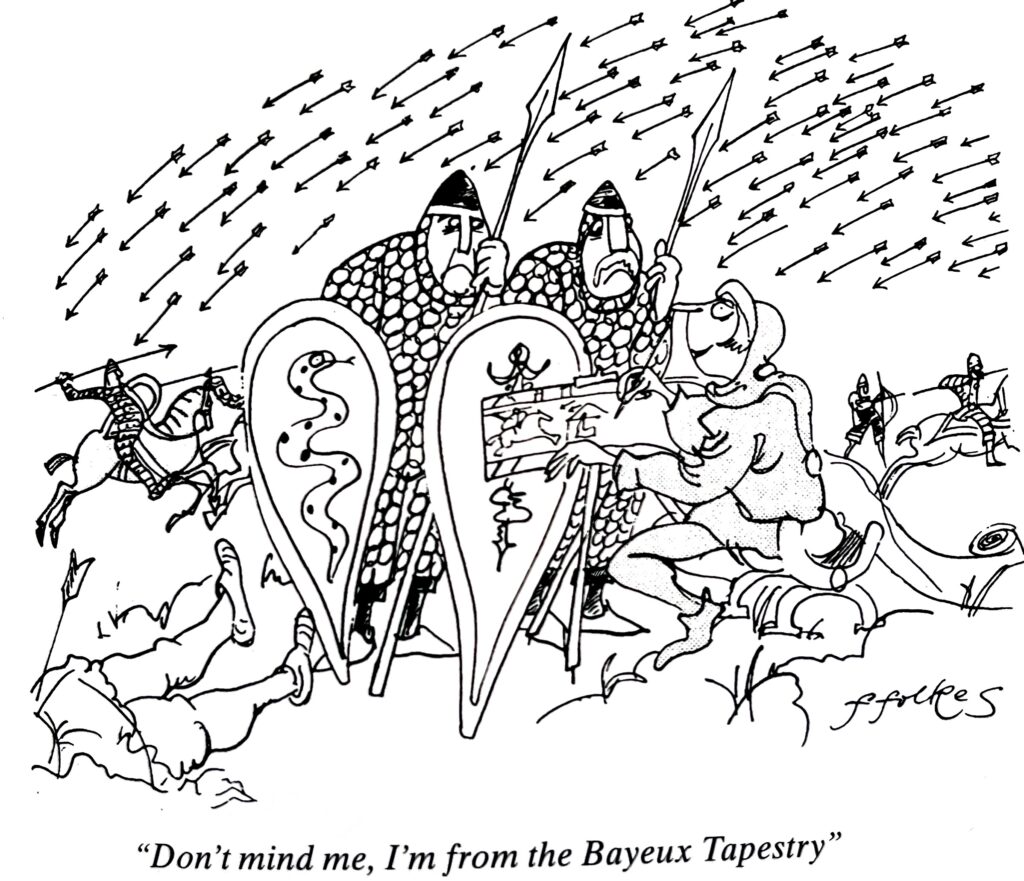
From the © Private Eye: A Cartoon History book
As Nick Newman, one of today’s best British cartoonists and editor of Private Eye: A Cartoon History better puts it, ‘ffolkes’s baroque style was unique and instantly recognisable. He considered himself a true artist – and unlike the rest of us, probably was – but that didn’t stop him being very naughty, eclectic, literary and funny.’
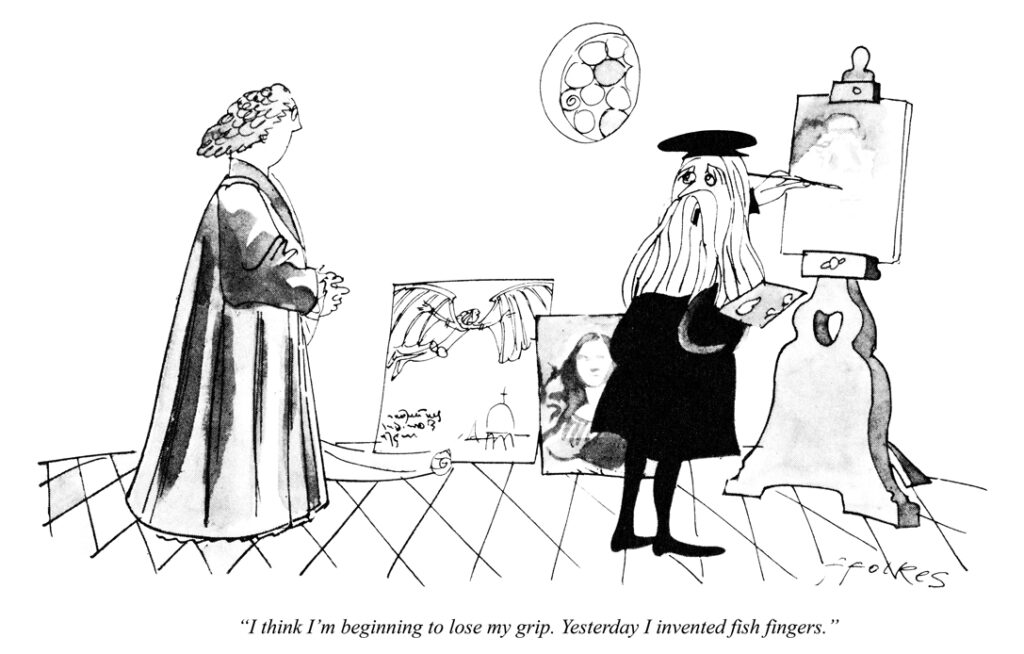
cartoon © Punch
Yes more importantly for a cartoonist, not only was he a great artist but he was funny. A favourite of mine is one of his many in Punch. He masterfully draws Leonardo da Vinci in his studio, turning to the lady behind him and saying, “I think I’m beginning to lose my grip. Yesterday I invented fish fingers.” That’s it, that’s the gag. It’s absurd, it’s ridiculous and 99% of cartoonists would say to themselves, well, that’s not going to work. But it does and it makes me laugh out loud just thinking of it.
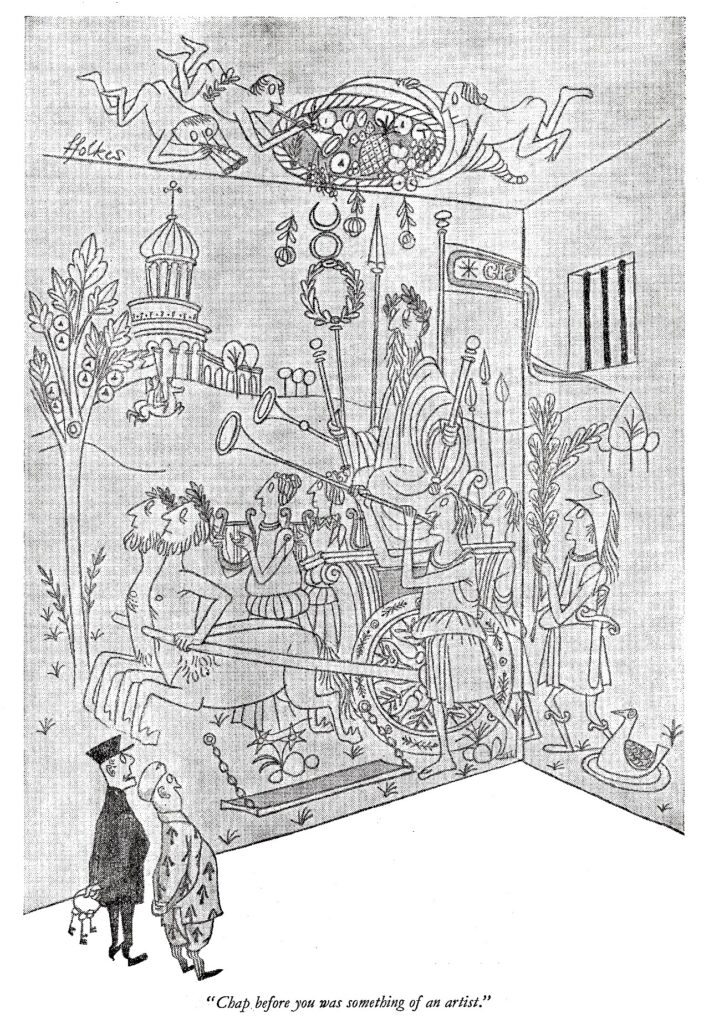
cartoon © Punch
I am not a great cartoonist, nor am I even a semi-decent one. In my own poor drawings I couldn’t say they are inspired by ffolkes, I couldn’t and wouldn’t dream of trying to emulate him. But I love his work. I love his jokes, I love his drawings, I love the technique and craftmanship and most importantly I love just going back and looking at them. One of the best illustrators Britain has ever produced.
ffolkes died in London on 18 October 1988 at age 63 from undisclosed causes. I don’t really care if he had a pompous side to him, or even if he could be an ass at times. As the saying goes you don’t judge Hamlet by Shakespeare only bequeathing his wife his second-best bed. His work stands the test of time even if the man does not, and I think he deserves a better epitaph than a cake over his head.
An abridged version of this article originally appeared in the March 2024 issue of The Oldie.
ffolkes art
Dean Patterson writes:
Why I’m championing the genius of Michael ffolkes.
Although probably not entirely forgotten, Michael ffolkes (purposely lowercase) will always it seems have the epitaph that reads, ‘Martin Honeysett threw a cake over his head.’ This story stems from a Private Eye 21st birthday bash, where before it got a chance to be dished out on paper plates with accompanying napkins, fellow cartoonist Honeysett threw the large and elaborately baked cake over ffolkes’ head.
Honeysett’s own obituary in the Guardian reads, ‘…Michael ffolkes. His name will live for ever just for that.’ It is a quote I believe originally attributed to the cartoonist Ken Pyne. And as much as I think of Honeysett and Pyne, I don’t think that is entirely fair.
One of Britain’s greatest cartoonists and illustrators, that seems to be the legacy of ffokes. Described as notoriously pompous and disliked by other cartoonists, he was by all accounts something of a toff and a showboater. He could be quite arrogant and patronising to other cartoonists, renowned for driving around London in an open topped Rolls Royce smoking thick cigars.
Whether he was rude or he was snobbish to fellow cartoonists I don’t know, I wasn’t there. It does certainly seem so, but looking at his back catalogue it is probably about time we start concentrating on his cartooning genius and put the cake on his face to one side. And it really is a genius back catalogue.
cartoon © Punch
If one can see cartooning as an artform, as I do and think everyone should, ffolkes is a great example of why. You can see his shadow in early Ralph Steadman work, even in early Quentin Blake as he developed the sketchy style we all know and love so well. You might even compare him to the great Charles Addams, the legendary New Yorker cartoonist whose magazine cartoons evolved into the Addams Family (dud-du-dud-dum, click-click.)
He wasn’t born Michael ffolkes, nor was he even born Ffolkes with a capital F. He was christened the slightly more mundane Brian Davis. Born on the 6th June, 1925 in London he went on to study at St. Martin’s school of art. Little more is known of his personal life or background. By his own account his mother was a singer and his father worked in advertising. He was an only child, he sold his first cartoon to his local paper aged 10 and his first Punch cartoon at 17.
Around 1955 he started to make a name for himself in Britian in the Daily Telegraph, first illustrating the Way of the World column and later the Peter Simple columns, both written by Michael Wharton.
cartoon © Punch
After finding success with the Telegraph he drew prolifically for magazines such as Punch, Private Eye, The Strand, Reader’s Digest and The Spectator. He also achieved that rare thing, he was a British cartoonist who broke the American market with regular cartoons for The New Yorker, Playboy and Esquire.
In modern cartooning he is largely skipped over. In my experience when a whinge of cartoonists (a collective noun as coined by the late, great Tony Husband) get together he is never brought up. We cartoonists love to talk about our heroes and the greats, I haven’t heard the name of ffolkes mentioned once. But he was one of the greats, in fact one of the best.
cartoon © Punch
His use of ink and watercolour was outstanding. He could do a simple black and white drawing and he could use watercolour better than nearly any other. He would sometimes do a background completely in watercolour without black line at all. He could put the most fascinating detail in his drawings, on par with the brilliant French legend Jean-Jacques Sempé, that are breath-taking and just like Sempé his simple drawings are equally as breath-taking in their few lines. In short, he was an artist.
From the © Private Eye: A Cartoon History book
As Nick Newman, one of today’s best British cartoonists and editor of Private Eye: A Cartoon History better puts it, ‘ffolkes’s baroque style was unique and instantly recognisable. He considered himself a true artist – and unlike the rest of us, probably was – but that didn’t stop him being very naughty, eclectic, literary and funny.’
cartoon © Punch
Yes more importantly for a cartoonist, not only was he a great artist but he was funny. A favourite of mine is one of his many in Punch. He masterfully draws Leonardo da Vinci in his studio, turning to the lady behind him and saying, “I think I’m beginning to lose my grip. Yesterday I invented fish fingers.” That’s it, that’s the gag. It’s absurd, it’s ridiculous and 99% of cartoonists would say to themselves, well, that’s not going to work. But it does and it makes me laugh out loud just thinking of it.
cartoon © Punch
I am not a great cartoonist, nor am I even a semi-decent one. In my own poor drawings I couldn’t say they are inspired by ffolkes, I couldn’t and wouldn’t dream of trying to emulate him. But I love his work. I love his jokes, I love his drawings, I love the technique and craftmanship and most importantly I love just going back and looking at them. One of the best illustrators Britain has ever produced.
ffolkes died in London on 18 October 1988 at age 63 from undisclosed causes. I don’t really care if he had a pompous side to him, or even if he could be an ass at times. As the saying goes you don’t judge Hamlet by Shakespeare only bequeathing his wife his second-best bed. His work stands the test of time even if the man does not, and I think he deserves a better epitaph than a cake over his head.
An abridged version of this article originally appeared in the March 2024 issue of The Oldie.
Tags
Latest Posts
Categories
Archives